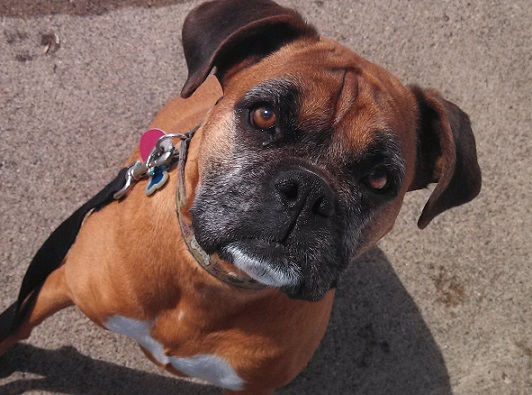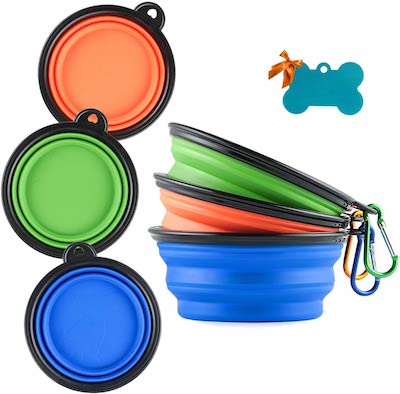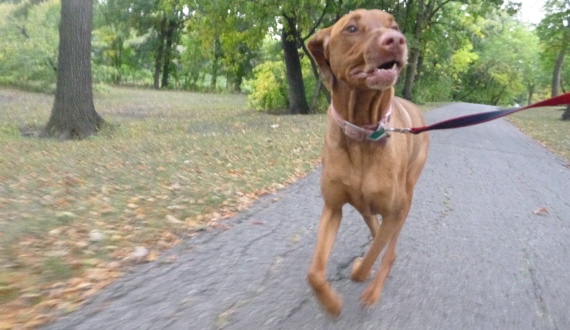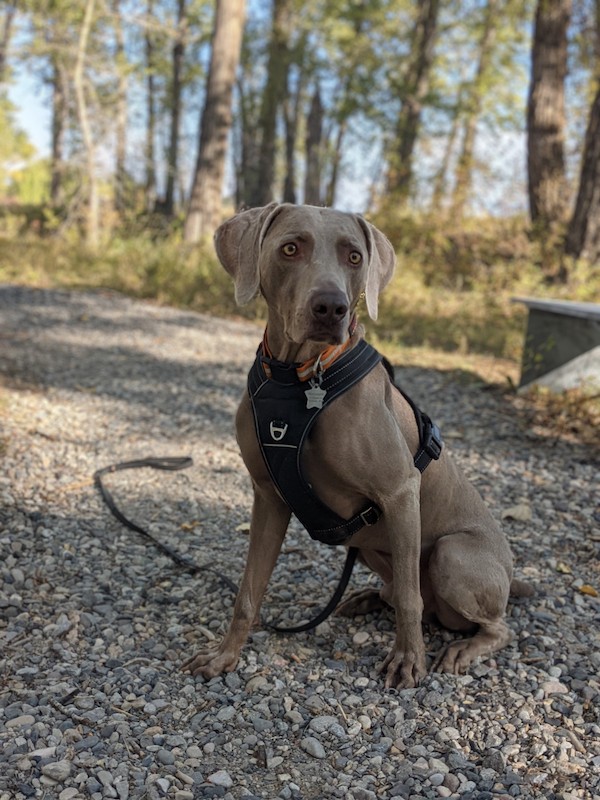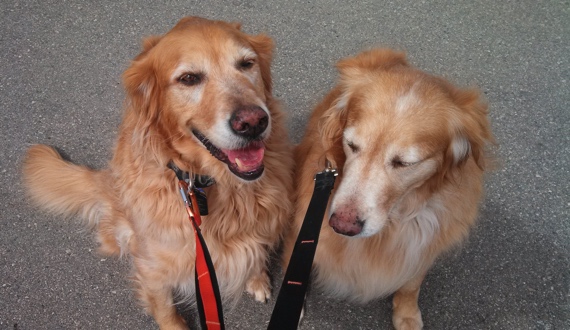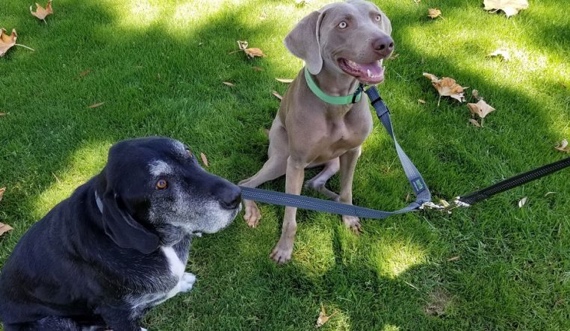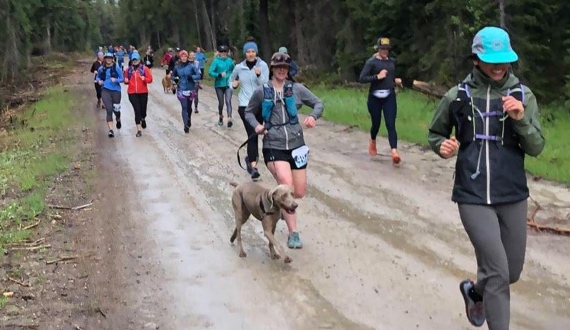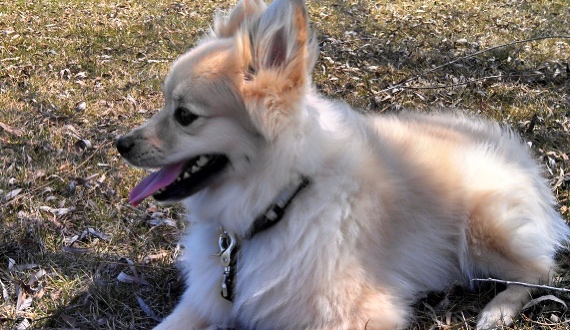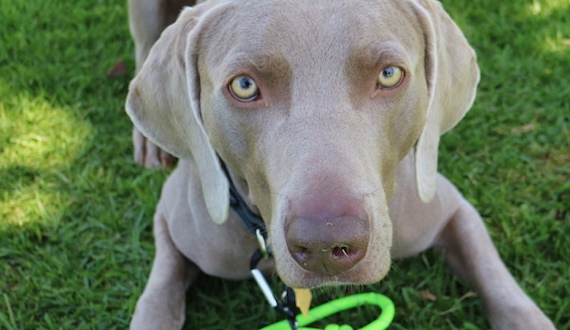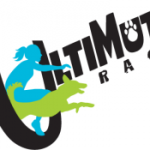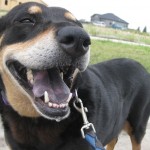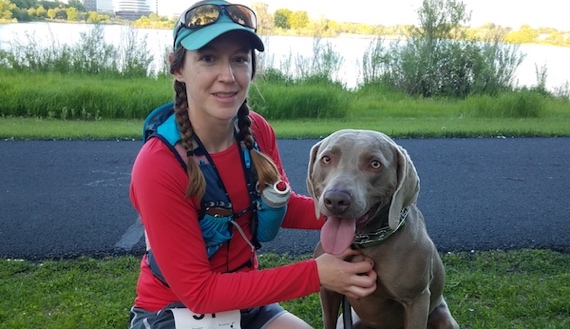
Table of Contents
How to Run a 5K or 10K with Your Dog
Most dogs are capable of running a 5K race (3.1 miles) with the right training. This article is about how to train and prepare your dog for a 5K or 10K race.
How to prepare your dog for a 5K or 10K
1. Slowly build up your dog’s miles.
Most dogs are capable of training for a 5K race, but if your dog is not used to running, it’s best to gradually build up his distance and pace. Make sure your dog can walk for at least 30-45 minutes at a brisk pace several times per week before you introduce running.
Next, start with just a half-mile of running during one of your walks. Or, you can go by time instead and just do 2 minutes of running or so, depending on your dog. Stick to that for a few days, then slowly increase the run to 1 mile and so on.
Most people tend to increase the distance too quickly. For both people and dogs who are new to running, it’s always better to go slowly and very gradually increase the distance. If your dog is brand new to running, you may want to read my tips for running with a dog.
2. Always bring water for your dog.
You should always carry water for your dog or run where you’re certain your dog will have access to water. For example, it can work well to run along a creak or to plan a route where you circle back to the house for a water break.
I like to wear a running vest/pack myself that holds water bottles. That way I always have water for my dog. I also carry a collapsible bowl for him in my pack.
3. Check with your dog’s vet
Most dogs are capable of training for a 5K race, but when in doubt, ask your vet.
Some giant breeds may not make the best runners. Same goes for English bulldogs or any individual dog that is overweight. That doesn’t mean these dogs can’t run at all. It just means some dogs may be slower or you may need to take more walking breaks.
Every individual dog is different.
4. Build up strong paw pads
The most common injury I see for dogs new to running is they scuff up or wear through their paw pads. Sometimes the paws will become red or even start to bleed.
This is not a big deal and all your dog needs is some time to build up stronger, more-calloused paws. Stop to check your dog’s paws every few minutes if she is new to running. If he paws look tender, back off for a few days and then slowly increase the time and distance again.
If your dog is used to walking a lot of miles on pavement, she still might scuff up her paws when she starts running. This is because her gait will be slightly different going at the faster pace.
5. Watch for fatigue
Most dogs will be excited to run with you and if you ease into the miles, you probably won’t run into any issues with fatigue unless it’s a hot, sunny or humid day.
If your dog starts lagging behind or struggling to keep up, slow your pace or stop and switch to run/walk intervals. You want your dog to enjoy running and not be forced to run!
Some dogs may need a bit of verbal encouragement or even a few treats here and there for motivation.
Signs your dog may be getting tired while running:
A long tongue. Your dog might be overheating. Take a break in the shade and give him some water.
Falling behind. Some dogs do prefer to run right next to or behind their person, but if your dog is strugging to keep up, stop and walk instead.
Heavy panting. Some light panting is normal but if your dog is panting heavily, then back off the speed and take a quick breather in the shade.
Stopping to sniff. Some dogs just love to sniff more than anything! That will be a training issue you’ll need to work through. But if your dog is normally happy to run but suddenly keeps stopping to “sniff” or pretends to be interested in the grass, then give her a break.
Jumping up on you. Many dogs jump up and nip at their owners or bite at the leash when they are excited. This is a common training problem to work through for young dogs who are overly excited and new to running.
But if your dog normally runs nicely at your side and out of nowhere starts jumping and nipping at you, she might be trying to tell you she is tired and needs a break.
Note that some dogs will also do this when you’re ready to go home and they want to KEEP running!
Sample 5K and 10K dog run training plan
An average time for a beginner to run a 5K is somewhere around 40 minutes, but don’t compare yourself to anyone else. When you’re running with a dog, the priority needs to be your dog’s safety, not your pace.
To help you get started in your training, we are working on a printable/downloadable version our own 5K and 10K training plans for dogs. I owned my own dog running business for 10 years and took hundreds of different dogs on 30- and 60-minute runs. My own dog trains with me for ultramarathons.
Starting point for 5K training: Work up to walking your dog 45 minutes a day at least four days per week. Once your dog can do that no problem, start adding some light running.
I recommend you choose 3 or 4 days to run with your dog. Five at the most. For example, Tuesday, Wednesday, Friday and Saturday. Walk or rest on the remaining days. My plan is based on TIME, not miles. Just go at a comfortable pace for you.
Here is our beginning 5K training plan for dogs:
- Week 1: Walk 4 minutes/run 1 minute. Repeat 5 more times until you hit 30 minutes.
- Week 2: Walk 2 minutes/run 3 minutes. Repeat 5 times until you hit 30 minutes.
- Week 3: Walk 5 minutes/run 2 minutes. Repeat 3 more times until you hit 28 minutes.
- Week 4: Walk 5 minutes/run 2 minutes. Repeat 3 times. Yep, same as previous week.
If you or your dog are struggling, it’s always a good idea to take a few days off or repeat one of the weeks several times.
- Week 5: Run 7 minutes/walk 2 minutes. Repeat 2 more times (27 minutes).
- Week 6: Run 10 minutes/walk 2 minutes. Repeat 2 more times (36 minutes).
- Week 7: Run 15 minutes/walk 2 minutes. Repeat (34 minutes).
- Week 8: Run 15 minutes/walk 2 minutes. Repeat. Same as previous week.
Remember to repeat a week, if needed. Always STOP or take a break if your dog needs it, regardless of the “plan.”
- Week 9: Run 20 minutes at a slow, comfortable pace without stopping.
- Week 10: Run 25 minutes at a slow, comfortable pace without stopping.
- Week 11: Run 30 minutes at a slow, comfortable pace without stopping.
- Week 12: Run 30-40 minutes at a slow, comfortable pace without stopping.
Next, run an actual 5K race with your dog! This might take you anywhere from 30 to 45 minutes or so, depending on your pace for 3.1 miles. Find dog friendly 5Ks here and 10Ks here.
How do I keep my dog from being distracted when we run?
Building up your dogs endurance is one important piece to training for a 5K or 10K race. But you’ll also want to prepare your dog for handling the exciting and distracting race environment.
This takes a lot of time and patience.
You can’t expect your dog to just show up at a busy 5K race and know how to handle himself.
Instead, gradually help your dog to feel comfortable running in distracting environments.
For example, bring your dog on a group run so he can get used to having others running ahead and behind you. This is very distracting for some dogs, especially if other dogs are along. If your dog is really struggling, have a backup plan to separate from the group (and let them know in this might be a possibility in advance so they’re not looking for you).
You could also attend a 5K race as a spectator with your dog to get him used to the crowd. That way, you’ll have the convenience of being able to leave the event with your dog if it’s too much for him, or move away from the crowds as needed.
Even just attending obedience classes, visiting dog friendly stores or running at a busy park are all ways to help your dog get used to different environments.
Always work within your dog’s comfort level. Reward good behavior with praise and treats. Try to reward eye contact and whatever you define as good leash manners.
How to prepare your dog the morning of a 5K or 10K race
The main thing is you want your dog to be properly conditioned to the distance, the weather and the terrain of the race. He should also be comfortable dealing with crowds and running near other people and dogs.
What to feed your dog before and after a run
You know your dog best, and when in doubt, discuss this with your dog’s vet. But here are my general recommendations.
Don’t feed your dog before a run, to prevent bloat
Bloat in dogs can happen when the dog’s stomach fills up with air and makes breathing difficult. It can also cut off blood to the heart. Bloat can happen to any breed but is more common in larger breeds, sporting breeds and breeds with a deep chest.
Due to the risk of bloat, it’s a good idea not to feed your dog 2 hours before a race or a training run.
So, you could feed your dog 2+ hours before the race. Or, you could wait and feed him afterwards, which is probably easier if you have an early start. Your dog will have plenty of energy to race a 5K or 10K, so don’t worry about that.
It’s OK to feed your dog a slightly larger meal the night before, although not necessary. Don’t go overboard with it, just 10% more should be fine. You could also add some extra water to his dry food to make sure he’s well hydrated.
But my dog demands breakfast!
I have a dog like this, and I promise you it is a training issue, not a “hunger” issue!
You could give your dog a handful of food in the morning before a run, ideally at least 45 minutes before you head out. Put it in his bowl as usual as though it’s a full meal. For some dogs, this satisfies their “routine” of eating breakfast.
If you try this, just know that giving your dog any amount of food before a run does increase his chances of bloat.
What to bring to a 5K/10K race for your dog
1. Water for your dog during a 5K.
The most important thing is to make sure your dog will have access to water. Do not count on the aid station or the start and finish line areas to have water for your dog.
I prefer to carry a running pack with a water bottle and a collapsible bowl.
2. The right collar or harness and leash.
You’ll want to use the right leash and collar or harness setup that your dog is used to while also allowing you to stay in control. There is no perfect collar or leash for every dog. You know your dog best.
If you are used to the hands-free leash set up, that is fine as long as you know you can control your dog and prevent him from darting in front of people, lunging at the other dogs or cutting people off.
I like to run canicross style with my dog out in front pulling me, but when we ran our first actual race together, I decided to use his no-pull harness and hold his leash. That way I could control him easier around other people. This worked well for us.
I recommend you do not try any new gear on race day. If your dog is used to running in a prong collar or a front-clip harness, then that is what you should use. There might be better tools to switch to in the future, but you should try different options during training, not on race day.
No matter what collar or harness you use for running with your dog, someone will probably judge you for it.
3. Poop bags during the 10K.
We want dogs to be welcome to more races, so we need to pick up after our dogs. Bring extra in case your dog’s “nerves” are acting up, if you know what I mean.
4. Optional dog treats.
I don’t bring treats or power bars for my dog, but if you’re used to bringing treats to help your dog focus on you, stick to your routine. Just know that dogs should not need a snack while racing a 5K or 10K distance. It’s actually healthier for them not to eat while running to prevent bloat.
I like to give my dog a nice snack as a reward once we’ve finished our run and calmed down a bit.
How hot is too hot to run a 5K with my dog?
This depends on the individual dog. When in doubt, bring extra water and plan to take breaks in the shade. Always have a backup plan to opt out of the race as needed or to hand your dog off to a family member who is a spectator.
When running and racing with your dog, your dog’s needs have to come first.
Try to do most of your training runs early in the morning during the summer or in the evenings. It’s OK to try a couple of easy, slow runs when it’s warmer just to get your dog used to the heat. But proceed with caution and take water breaks in the shade as needed.
I will take my own dog on EASY, slow training runs if it’s 75 degrees or even a bit warmer. We won’t go much more than 3 miles or so.
However, I do not race with him on a sunny or humid day above 75 degrees or so. This is because he gets so excited at races and gives it 110 percent at all times! He does not know how to slow down and pace himself according to the conditions. He is all GO!
So, you do have to know your dog. And the actual temperature is not necessarily the most important factor. You have to consider sun/clouds, humidity, wind, shade, access to water, your dog’s endurance level, your dog’s coat type, etc.
How old does a dog need to be to run a 5K or 10K race?
You will get a different answer to this no matter who you ask (and often a very strong opinion!). Even veterinarians vary widely in their opinions on when a dog is old enough to run.
In general, it’s best to wait until your dog is at least 8 months old before you start a regular running plan. Many dog owners choose to wait until the puppy is 12 or even 18 months old. Regardless of age, start out slowly and very gradually build up your dog’s mileage.
When to start running with a puppy
I personally start taking my puppies on short runs (like a half-mile at first) when they are around 8 months old and slowly increased miles. Prior to that, we do a lot of walking, around 3-4 miles a day.
I have an adult weimaraner now and a Lab puppy. I plan to start short runs with my Lab when he is about 8 months old.
The reason to be a bit cautious and slowly ease into the miles is because you don’t want to damage a puppy’s developing joints.
Breed also matters a lot, as well as the size of the dog. Smaller dogs with lighter builds can generally start running a little sooner than larger or giant breeds.
Larger dogs take more time to develop physically (and let’s face it, mentally as well!). Their growth plates take a bit longer to close.
If you have questions, ask your dog’s vet and breeder for their advice and use your best judgment. The decision is yours to make.
Enjoy running and racing with your dog! It makes running so much more fun when you have such an enthusiastic companion!

